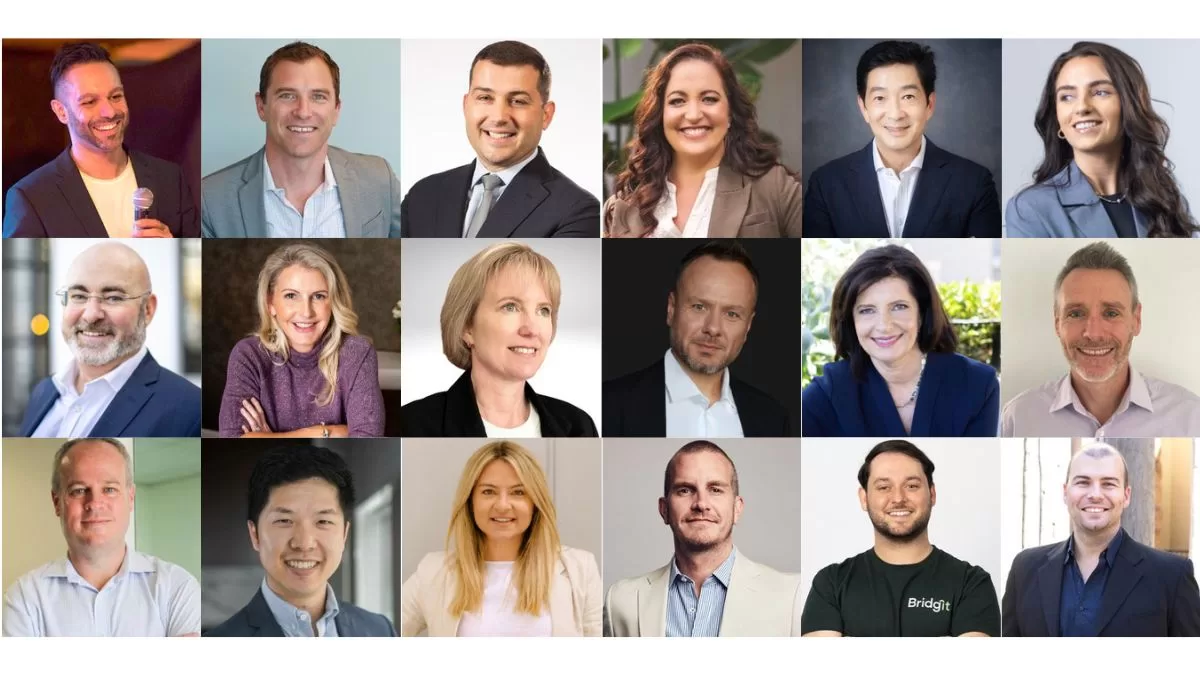The recent Amex Trendex: B2B Edition survey, focusing on business-to-business spending, reveals a strategic growth mindset among Australian businesses. In the face of ongoing economic uncertainty, 43% of business decision-makers plan to increase spending to gain a competitive edge in the coming year. In addition to heightened spending, businesses are adopting key strategies to enhance efficiency and productivity. Over the past 12 months, 67% of businesses identified digitisation and automation of payments as a top priority. For businesses that have already automated payments, 44% reported saving an average of 7.3 hours per week for their finance team. The shift towards digitisation and automation not only results in time and cost efficiencies but also contributes to reducing human errors (47%) and achieving more accurate invoicing (45%). Key findings from the survey include: 66% of businesses plan to start or further automate the process of receiving customer payments and processing invoices and purchase orders in the next six months. 47% of businesses anticipate increased spending on technology in the next six months, with 69% aiming to enhance productivity. 50% of decision-makers increasing technology spending aim to improve the speed and effectiveness of payments. 81% of business decision-makers acknowledge the growing importance of managing cash flow and working capital. 50% of businesses plan to allocate more funds to advertising, sales, and marketing to differentiate themselves from competitors. Among those increasing spending on advertising, 40% are focusing on new marketing and advertising channels, and 39% are promoting new products or services. Lisa Belcher, Vice President of Merchant Partnerships at American Express, emphasizes the resilience of Australian businesses amid challenging conditions: “The Amex Trendex: B2B Edition shows that regardless of their size, businesses are playing the long game, adapting where needed, and seeking ways to improve efficiency and stand out from the competition.” The research points to a rising sense of optimism among Australian business decision-makers, with 75% expressing optimism about their company’s success in the next 12 months—an increase from 69% in the previous year. Luke Achterstraat, CEO of the Council of Small Business Organisations Australia (COSBOA), highlights the adaptability of Australian businesses, stating, “Australian businesses are aware of the challenges they face and are engaging in savvier ways to defy all obstacles.” Keep up to date with our stories on LinkedIn, Twitter, Facebook and Instagram.
Here’s a recap of recent funding developments from Australia, India, the US and beyond. Splose accelerates Series A funding round with $1.5 million Adelaide-based technological powerhouse Splose initiates a $3 million Series A funding round, securing an impressive $1.5 million within the first 24 hours. The funds validate Splose’s innovative approach in the NDIS sector and fuel its strategic vision for product development and international market penetration. High-profile shareholders include ex-AFL player Ryan Fitzgerald, SANFL legend Nick Chigwidden, and AFL player Kyle Hartigan. Upworth raises $1 million in first external round Sydney-based fintech Upworth successfully secures $1 million in venture capital from prominent business angel investors and entrepreneurs for its inaugural external round. Co-founders Alexandre Chavotier, Carlos Rios, and Maxime Chaury aim to transform the way people manage their money with a focus on technology, finance, and consumer services backgrounds. Refilled raises $1.3 million in seed round Environmental technology startup Refilled raises $1.3 million in a Seed round to transform drink dispensing and combat single-use plastic bottles. Led by existing supporter Melt Ventures, with backing from Envato cofounders Cyan and Collis Ta’eed, the funds will further Refilled’s mission to reduce plastic waste. Kashcade secures $5.5 million to boost digital lending for startups Fintech Kashcade, a digital lender offering non-dilutive capital to startup founders, raises $5.5 million in a round led by Prandium Capital. The funding, comprising $1 million in equity and the remainder in debt, will be used to expand Kashcade’s loan book and enhance its digital lending capabilities. Haut.AI secures €2 million in seed funding European generative AI leader Haut.AI, renowned for its beauty and skincare tools such as SkinGPT, raises €2 million in seed funding from LongeVC and Grupo Boticário shareholders’ VC arm. The funds will fuel the expansion of its no-code skincare e-commerce personalization software and advance R&D in multimodal generative AI for skin analysis. Keep up to date with our stories on LinkedIn, Twitter, Facebook and Instagram.
The recently released CreditorWatch Business Risk Index (BRI) for October 2023 paints a worrisome picture of the Australian business landscape. Business activity in the country has hit alarming lows, with the average value of invoices reaching its lowest point since CreditorWatch began tracking this metric in January 2015, indicating a substantial 34% year-on-year decline. This significant drop in the average value of invoices is indicative of a decline in forward orders, primarily attributed to a contraction in consumer demand. The repercussions are reverberating through the supply chain, creating substantial challenges for businesses across sectors. Key Indicators and Trends: B2B Trade Payment Defaults: Another crucial indicator, B2B trade payment defaults, is on an upward trend. While there was a slight retraction from September to October, it consistently remains above pre-COVID levels, acting as a warning sign of potential business failures. External Administrations: External administrations have surged by 81% year-on-year to October, surpassing pre-COVID levels. This escalation points to heightened challenges faced by businesses, increasing the likelihood of business failures. Credit Enquiries: Reflecting the broader decline in business activity and a reduction in commercial loan applications, credit enquiries have been on a downward trend since May. Business Failure Rate Prediction: CreditorWatch forecasts a substantial increase in the business failure rate, anticipating a rise from the current 4.21% to 5.78% over the next 12 months. Regional and Sectoral Variances: Capital City CBDs: Melbourne City emerges as the most improved CBD area over the past year, making a six-point leap up the Business Risk Index to 32.8. In contrast, Sydney Inner City lags, experiencing a 4.8-point slide down the index, making it the worst-performing capital at 24.1. Regional Risk: Western Sydney and South-East Queensland dominate the list of highest-risk regions due to their susceptibility to interest rate changes, owing to relatively high levels of debt among businesses and households, coupled with lower-than-average incomes. Best Performing Regions: Regional areas in Victoria, inner-city Adelaide, and North Queensland constitute the top-performing regions, characterized by below-average property and rent prices, along with above-average incomes. Insights and Projections: Consumer Demand Impact: CreditorWatch CEO, Patrick Coghlan, attributes the challenges to the Reserve Bank of Australia’s attempts to curb inflation through interest rate increases, impacting businesses as consumers cut back on spending. Leading Indicators: Key indicators, such as the average value of invoices and B2B payment defaults, illustrate a clear picture of businesses grappling with dropping order values, declining revenues, and squeezed margins due to inflation. Rising Interest Rates Impact: CreditorWatch Chief Economist, Anneke Thompson, notes that higher interest rates are impacting smaller businesses first, given their susceptibility to changes in demand. Outlook for Retail Sector: The upcoming Christmas period is expected to be challenging for the retail sector, with reduced corporate discretionary spending impacting the hospitality industry. Consumers are anticipated to be more modest and selective in their Christmas purchasing. Domestic Travel Upside: Despite economic challenges, domestic travel may see an increase as holidaymakers prefer domestic holidays to avoid the higher costs associated with international travel, as observed during the COVID pandemic. Keep up to date with our stories on LinkedIn, Twitter, Facebook and Instagram.
In the wake of persistent inflation and recent interest rate hikes, small businesses are facing a challenging landscape as they gear up for the peak sales season. A recent survey conducted by Sendle, Australia’s first 100% carbon-neutral parcel delivery service, sheds light on the apprehensions of over 1300 small businesses across the country. The “2023 Small Business Survey” delves into the attitudes and expectations of these enterprises, uncovering a nuanced picture of economic confidence and strategic planning. Sales worries and economic pressures Two-thirds of small businesses express concern about their sales performance this peak sales season, with 30% forecasting zero growth compared to the same period last year. The impact of persistent inflation and recent rate rises is palpable, revealing a year-on-year dip in small business confidence. The survey discloses that 34% of small businesses are confident about their peak sales growth this year, a drop from 42% in 2022. Laura Hill, Managing Director of Sendle Australia, interprets the findings, stating, “Sendle’s 2023 Small Business Survey shows that many small businesses are feeling less confident about consumer demand this peak sales season, due to the impact of recent rate rises and cost-of-living pressures. However, small businesses are more optimistic about growth in 2024, most likely as they’re taking a number of proactive steps to attract new customers.” Performance expectations across categories While concerns loom over economic challenges, the survey highlights specific expectations within different business categories. The impact of inflation and rate rises on household consumption is a primary concern, with over half (52%) of small businesses worried about slowing consumer spending due to cost-of-living pressures this peak sales season. Interestingly, when forecasting business performance for the upcoming Black Friday, Cyber Monday, and Christmas sales period, 36% of small businesses anticipate significant sales growth, with 14% expecting between 50-65% growth. Small businesses in key gifting product categories such as clothing and footwear, secondhand and vintage items, and toys, hobbies, and games are most likely to forecast strong sales growth. However, within the same categories, there is variability, with some businesses forecasting zero to no sales growth, hinting at ongoing uncertainty or the influence of other factors such as the ability to offer sales discounts. Challenges on the Horizon and Proactive Measures Looking ahead to 2024, persistent inflation remains a concern for 62% of small businesses, expecting a mild impact on their bottom line. Customer acquisition takes center stage as the number one concern for the new year, with two-thirds (66%) expressing anxiety about bringing in new customers. This marks a substantial jump from 2022 when only 22% of small businesses considered customer acquisition their top challenge. Managing cost pressures (53%) and keeping the business competitive (38%) are also reported as significant challenges. Despite these challenges, the majority (84%) of small businesses are forecasting online sales growth over the next 12 months, with 36% anticipating up to 25% sales growth. The survey indicates that 37% are looking overseas for growth, expecting up to a quarter of their total sales growth to come from outside Australia. To navigate the complexities of 2024, small businesses plan to take proactive measures. Many are focusing on enhancing their social and marketing capabilities, with 61% planning to grow their social media presence and engagement. Additionally, 39% plan to invest in more marketing and brand awareness initiatives, aiming to engage new customers and convert them into sales. Other proactive steps include updating pricing strategies, expanding into new markets, and increasing shipping options for customers. Calls for industry changes In the face of challenges, small businesses are making strategic choices in the postal and parcel delivery industry. Over the last 12 months, Australia Post’s price hikes have prompted 60% of small businesses to move 50-100% of their shipping volumes to Sendle. Almost half (49%) are utilizing multiple shipping carriers to secure the best prices. Concerns about the postal and parcel delivery industry in Australia are widespread among small businesses. The majority (84%) express a desire for greater competition and access to low-cost carriers/shippers. A significant portion (35%) believes that more government intervention and regulation are needed to drive down prices. Laura Hill concludes, “Small businesses are remarkably resourceful and resilient. But their bottom line is being increasingly squeezed by inflationary pressures and parcel price hikes by Australia Post. While it’s encouraging to see more small businesses shipping around for better rates, more can be done to make Australia’s postal and parcel delivery industry open and competitive, so it delivers choice and ultimately drives down costs for small businesses. Our survey reveals this is what small businesses want to see in 2024.” For more information about Sendle’s 2023 Small Business Survey, please visit: https://try.sendle.com/en-au/small-business-survey-october-2023 Keep up to date with our stories on LinkedIn, Twitter, Facebook and Instagram.
It all started with a simple act of reusing cups, which evolved into a mission to find eco-friendly solutions that could reshape the narrative of large-scale sports and entertainment venues drowning in a sea of single-use plastics. Introducing WOSUP (War, on Single Use Plastic) an innovative initiative that enables sports and entertainment venues along, with their fans to actively contribute towards building a future with zero waste and carbon emissions. This is made possible by embracing WOSUPs aluminum cups, which can be reused indefinitely and are easily recyclable. These cups are accompanied by cutting edge fan engagement technology that provides real time interactions. Dynamic Business sat with co-founders Martin Salter and Karl Page to discuss their journey of uncovering the fascinating journey that sparked WOSUP’s inception. Q1: How did you decide to start your business? What inspired you? Martin and Karl: As footy fans, we found ourselves at an AFL game (Sydney Swans vs Gold Coast Suns) at the Sydney Cricket Ground, in 2018; cheering in the stands, but feeling overwhelmed by the amount of disposable plastic everywhere. Beverages sold at the game were exclusively served in single-use polyethylene terephthalate (PET) cups and by the time the final siren sounded, we noticed an accumulation of thousands of discarded cups littering the stadium. During that game, we started reusing the same PET cups from our first drinks, while contemplating a more sustainable, eco-friendly solution… which is how WOSUP Australia was born. Now as then, our vision is to enable and empower large-scale sport and entertainment venues to call last drinks on ALL types of plastic cups and transition to lightweight, reusable and infinitely recyclable aluminium cups. In the global war against plastic pollution, it’s sobering to consider only 9% of all plastic ever made has been recycled, while 75% of all aluminium produced remains in use, positioning it as a key building block of a truly circular economy. Martin: I have always wanted to make a positive difference by helping people in need or making a tangible impact for the good of our planet (above and beyond my own day-to-day, eco-friendly habits). I’ve also always loved being entrepreneurial, and strongly believe making money and improving the world can – and must – go hand-in-hand. As WOSUP developed, it became clear we could tangibly tackle one of the world’s biggest environmental challenges: plastic pollution. Through all the ups and downs of launching a purpose-driven startup, I’ve been inspired by “Generation Next” (Millennials, Gen Z and Gen Alpha), now making up over half of Australia’s population, including my two daughters. For this generation, a zero-waste/zero-carbon lifestyle is king, and young people expect brands and institutions to reflect their own value system. I think that’s pretty inspiring. Karl: As a surfer and ocean lover, my inspiration – and ongoing motivation – comes from discovering plastic pollution floating in some of the world’s most remote and untouched locations. Plastic pollution is choking our planet. Period. Without concerted action, the United Nations Environment Program (UNEP) warns the annual flow of at least 11 million tonnes of plastic, ending up in oceans, will rise to 29 million tonnes per year by 2040, with devastating consequences for marine life. Who hasn’t heard the prediction that by 2050, we’ll see more plastic than fish in our oceans? It’s something I lose sleep about, knowing that in Australia alone, our stadiums and arenas churn through an estimated 40 to 50 million disposable plastic cups each year. Martin and I also felt inspired to take a leap of faith in launching WOSUP, buoyed by our belief that sport has the power to drive positive behavioural change, motivating people en masse to follow the lead of sporting codes, teams, and individual players; all increasingly taking a stance on social/environmental issues, with a knock-on effect (good or bad) to sponsors and brands. Q2: What are some of the important choices and strategies that contributed to the growth of your business? Martin and Karl: Right from the outset, our emphasis has been on establishing a social impact enterprise, which meant choosing the right team and contractors to partner with, aligned to our mission and values. As cliched as it might sound, people – both within and outside any organisation, no matter size or purpose – will always be your greatest asset and investment. At WOSUP, we’re blessed with a highly experienced team, backed by relevant commercial and technological acumen, and a stellar Board, mirrored in the November 2023 appointment of Andy Marinos (former Rugby Australia CEO) as Chairman, and May 2023 addition of outgoing Mamamia Media Company Chief Revenue Officer, Tony Prentice. Our “people network” also extends to stakeholders in the live sport and entertainment ecosystem, who, despite pressures on the industry during and after COVID lockdowns, generously gave their time to listen and assist us in developing a sustainable commercial model, which we’re proud to say is the first of its kind globally. Q3: What makes your business different from other businesses in the industry? How do you stay ahead and bring innovation to this market? Martin and Karl: WOSUP’s business model as a social impact enterprise, focused on revolutionising the live sport and entertainment industry, is globally unique. There is no business like us in Australia or overseas. WOSUP aluminium cups are purposely designed to be reusable, taking the next step in offering a closed-loop, clean tech solution. Importantly, a shift to reusable (not just recyclable) products is vital in the transition from an environmentally questionable linear economy to a sustainable circular economy. By founding WOSUP, we tackle head-on an easily fixable, yet entrenched problem, that large-scale venues and events are among the world’s biggest contributors to single-use plastic cup waste. Notably, this is something that many spectators may not even question, when having fun at live events, assuming plastic cups are the only option. WOSUP’s game-changing solution turns on one simple truth: prevention is the best cure for plastic pollution, and no amount of well-intentioned plastic waste clean-ups will
McGrathNicol Advisory launched the findings of its third annual ransomware survey, revealing that 56 percent of Australian businesses have suffered a ransomware attack in the past five years: 42 percent of medium and large businesses have fallen victim to a single attack, while 14 percent have been targeted multiple times. Of those that did suffer an attack, close to three quarters (73 percent) chose to pay the ransom demand. Now in its third year, McGrathNicol Advisory’s Ransomware Survey provides an authoritative barometer of the ransomware threat to Australian businesses. McGrathNicol partnered with YouGov to survey 500 Australian business owners, partners, directors and C-Suite leaders across businesses with 50 or more employees. The five-year ransomware average is down from a high of 69 percent in 2022, but remains well above the 31 percent recorded in 2021 when McGrathNicol started tracking these results.The findings suggest that cyber criminals hit a ransomware peak last year and have diversified to other forms of cyber extortion in 2023. The proportion of business leaders who reported that they made a ransomware payment declined slightly year-on-year, from 79 percent in 2022 and 83 percent in 2021, but has remained high despite government pressure and regulatory scrutiny. Australian organisations are acquiescing quickly: 74 percent of executives reported paying the ransom within 48 hours while almost two in five (37 percent) made the payment within 24 hours. This is consistent with previous years, with 78 percent of companies surveyed in 2022 reporting that they paid within 48 hours, and 74 percent in 2021. Overall, the estimated average cyber ransom paid was $1.03 million, on par with $1.01 million in 2022 and $1.07 million in 2021. This figure is still lower than the average amount that business leaders would be willing to pay ($1.32 million). Despite consistent government advice against doing so, 70 percent of surveyed businesses (including those yet to experience an attack) said they would be willing to pay a ransom. This suggests that ransom payments are seen as a legitimate option by most Australian executives and have already been factored in as a cost of doing business. Australian businesses soften on reporting The 2023 McGrathNicol survey found that executives’ attitudes to reporting ransom payments to authorities have also softened. In 2022, 75 percent of surveyed executives believed that it should be mandatory for an Australian business to report a ransomware attack to the authorities—with almost three in five (56 percent) believing that it should be reported regardless of whether a ransom payment is made. However, this trend has reversed in 2023, with only 60 percent of executives saying they support mandatory reporting and less than half (46 percent) saying an attack should be reported even if a ransom hasn’t been paid. A closer look at payment motivations provides further insight. The research found that three quarters of business leaders (74 percent) cite external risks as the reason for paying a cyber ransom, including to minimise potential harm to stakeholders, reduce brand damage, and to avoid sensitive information being leaked. As attacks become more commonplace, executives’attitudes towards ransomware payments from businesses in their supply chain are also easing: 83 percent of executives say knowledge of a payment from a business they are associated with would negatively impact their perception of that business. This is down from 91 percent in 2022 and 90 percent in 2021. These drivers help to explain the high proportion of organisations that attempt to negotiate with cybercriminals. This year, two in three (66 percent) negotiated prior to making a ransom payment, up from 59 percent in 2021 but down from a high of 74 percent in 2022. Darren Hopkins, Cyber Partner at McGrathNicol Advisory, said:“Businesses are still overwhelmingly paying ransoms, and paying them quickly, to avoid negative backlash from customers, partners and stakeholders. It’s now being factored in as a cost of doing business. The research shows that executives are becoming empathetic and less hard-nosed about reporting these attacks to authorities. But without greater collaboration and knowledge-sharing, our ability to prevent ransomware attacks is undermined. This intelligence can help business leaders make informed decisions rather than rushing into paying an expensive, and potentially illegal, ransom.” One noteworthy finding suggests that businesses might be overly confident in their ability to respond to ransomware attacks. A significant 88% of executives believe their organizations are adequately “prepared,” marking a substantial uptick from 78% in the previous year. However, this confidence appears to be somewhat inflated, as only three in five organizations (61%) have developed a concrete cyber incident response plan. Furthermore, 18% of business leaders remain uncertain about the existence of such a plan, highlighting potential gaps in preparedness. Another significant revelation pertains to the perception of cyber insurance among businesses. A notable 80% of surveyed businesses deem their cyber insurance policy as good value, with 64% expressing that their policy provides a sense of peace of mind. Among executives, 44% attribute this positive perception to the crucial role of a cyber insurance payout in safeguarding their businesses financially. The survey also underscores the persistent threat posed by email phishing in the realm of ransomware. Email fraud or ‘business email compromise’ maintained its status as the most common mode of entry, representing 30% of all ransomware attacks in 2023. This figure aligns with the observed prevalence in 2022, remaining a consistent and formidable cybersecurity challenge. Blare Sutton, Cyber Partner at McGrathNicol Advisory, added: “The growing acceptance of ransomware payments indicates that the threat is becoming normalised. However, this isn’t making businesses safer, it is merely continuing to fund the activities of cyber criminals who are evolving and diversifying their attacks.” Keep up to date with our stories on LinkedIn, Twitter, Facebook and Instagram.
Fluctuating economic conditions and resulting impacts mean businesses need to carefully consider the option of a strategic restructure. However, restructures are not without risks. Poorly designed restructuring initiatives often culminate in a slash-and-burn approach that compromises the organisation’s future growth prospects. Such approaches may even result in what we call ‘deck chair reshuffling’ among leadership, creating the illusion of change while failing to yield any substantial improvement in performance. Three key factors that drive successful organisational redesign include recognising the opportune moment to reorganise, restructuring to deliver tangible operational enhancements, and implementing changes to foster enduring impact. Consider both operational and team structures A common misconception is that restructuring teams and reporting structures alone can bring lasting value. if this is done without considering the overall operating model, the organisation often remains stuck in the same cycle. At the same time, the process of restructuring can amplify the risk of employee disenchantment. Even the most well-executed initiatives can leave employees feeling insecure in their roles or uncertain about their accountabilities. It is crucial that the long-term value derived from the restructuring justifies the disruption it incurs. Meaningful changes in the operating model usually come from strategic shifts driven by market changes, product or service portfolio adjustments, or re-evaluating how value is generated. When the operating model remains largely unchanged, reinforcing management practices that enhance performance tends to be more effective than mere structural adjustments. Pinpointing the root causes of performance challenges A holistic assessment of whether the organisation’s operating targets, processes, and capabilities support the execution of its strategy is essential. It is also imperative to evaluate whether the organisation has an appropriately sized, well-structured workforce with clearly delineated accountabilities to execute the operating model. Scrutinise whether the organisation’s internal management practices consistently drive it to meet its targets – this holds the key to identifying areas for improvement and determining the necessity of strategic restructuring. Implementing restructuring for tangible operational enhancements Navigating the intricate terrain of organisational redesign means avoiding common pitfalls. Failing to establish a direct and tangible link between the new design and the overarching strategic trajectory can lead to undervaluing the existing assets and capabilities. It can be tempting to adopt a one-size-fits-all structural template, such as a functional, product-led, geographic, or customer segment-based approach; however, this can dilute the transformative impact of the restructuring process. To navigate these challenges successfully, businesses should develop interconnected models that are directly tied to the strategic vision. Optimising the operating model Updating the operating model often requires significant improvements, such as achieving ‘more with less’ or ‘faster responses’. Turning these strategic targets into concrete operational goals is important in shaping the new model. Achieving these goals involves targeted changes to processes and capabilities, including automation, strategic partnerships, and technical upgrades. For instance, a telecommunications company’s strategy focused on frequent product launches; this requires streamlined coordination among various functional experts, such as marketing, engineering, finance, product design, and channels. Clarifying the roles of these functions in decision-making processes is vital for successful strategy execution. Driving lasting high performance Fully realising the organisation’s potential requires updating old performance management systems to align with new targets and responsibilities. This involves strengthening new capabilities and instilling the necessary behaviours for the smooth functioning of the new model. However, many leaders overlook this step, potentially missing opportunities for sustainable growth post-restructuring. Fostering a culture of continuous improvement through ambitious goal-setting and creating a pipeline of improvement ideas among leaders establishes a foundation for ongoing efficiency gains, reducing the need for repetitive disruptive restructuring. Building the organisation to deliver Clarity among divisions and individuals regarding their respective responsibilities serves to expedite decision-making processes and enhance their effectiveness. The key is to strike a balance between adhering to theoretically ‘correct’ organisational structures and accommodating market dynamics, such as skill shortages, or internal realities like the need to retain institutional knowledge. The process of organisational restructuring must be sufficiently iterative to instil confidence among leaders that they have assembled the most efficient teams—that is, teams capable of delivering on the organisational objectives through optimised resource allocation, clear accountabilities, and well-defined reporting lines. Implementing for lasting impact Effecting changes across core operational elements demands coordination and phased execution. Maintaining the discipline necessary to achieve sustainable high performance is paramount. This involves identifying changes and their connections while steadily advancing, ensuring the whole team remains engaged. Prioritising changes, delegating responsibilities to line leaders, and employing detailed plans for weekly progress tracking and risk management will keep plans on track. A comprehensive transition plan helps resolve any resource conflicts or obstacles. Engaging stakeholders for lasting change The success of any restructuring hinges on engaging stakeholders to understand the need for change, its benefits, and its impact on employees and others involved. Senior leaders should consistently demonstrate commitment through various communication channels like newsletters, town hall meetings, and social media. Publicly reporting progress reinforces the need for change and ensures accountability. Investing in a lean Transformation Management Office (TMO) is advisable, as a small yet competent TMO adds more value than a larger, unwieldy one. Line managers need to take full ownership of the change process for sustainable restructuring. The essential role of senior management The successful redesign of the operating model and the accompanying organisational structure hinges on visible advocacy from senior management. Leadership is pivotal in setting the aspiration for change, steering the design process, and leading the implementation efforts. While this may demand a significant investment of time, it is an indispensable aspect of the organisational restructuring process and cannot be delegated to external consultants or middle management. Organisational restructuring can be an incredibly useful mechanism to enhance operational efficiency and performance. However, the essence of this process lies in meticulously aligning the operating and performance models with the overarching business strategy to ensure success. Keep up to date with our stories on LinkedIn, Twitter, Facebook and Instagram.
Calling all small business owners! The 2024 Australian Small Business Champion Awards are now accepting entries. This nationally acclaimed awards program recognizes and celebrates the outstanding achievements of small business operators, highlighting their significant economic, social, and cultural contributions to Australia. In its 26th year, the Awards spotlight the best small businesses in retail, services, and manufacturing, featuring over 100 categories and special spotlight categories, including Business of the Decade, Small Business Young Entrepreneur, Small Business Entrepreneur, and the 2024 Growth Award. Entry to the 2024 Australian Small Business Champion Awards is FREE, and the submission deadline is February 15, 2024. Small businesses are encouraged to showcase their excellence and innovation. Small businesses, which employ 5.1 million Australians and contribute one-third of Australia’s GDP, play a crucial role in local communities. Despite economic challenges, they continue to thrive, supporting various community initiatives. Steve Loe, Awards Founder and Managing Director of Precedent Productions, emphasizes the resilience of small businesses. He highlights the importance of honoring these businesses for their economic contributions and their support for community-based initiatives. “Even after more than two decades of presenting the Australian Small Business Champion Awards, I am still in absolute awe of the resilience and remarkable triumphs of our nation’s small business operators. It is truly a privilege to help shine a deserved spotlight on these small business champions. “From regional and rural areas to the suburbs and capital cities, small business operators from all parts of the country are encouraged to enter the Awards – free of charge – as we strive to celebrate the people behind the small businesses that shape their local communities and our nation as a whole,” added Mr Loe. CommBank is Presenting Partner of the 2024 Australian Small Business Champion Awards. Finalists of the 2024 programme will be announced during March; and winners of the 2024 Australian Small Business Champion Awards will be revealed via two National Presentation Evening Gala events at Sydney’s The Star on 12 and 13 April 2024. For more information and to submit an entry form, visit: businesschampions.com.au. Keep up to date with our stories on LinkedIn, Twitter, Facebook and Instagram.
Welcome to AI Weekly, where we delve into the cutting-edge and ever-evolving world of artificial intelligence and bring you concise yet comprehensive summaries of the most exciting AI developments. Retool’s inaugural AI survey Retool, a prominent business software development platform, has unveiled key insights from its first State of AI Survey, polling over 1,500 tech professionals. The survey paints a cautiously optimistic picture of AI’s transformative potential, revealing that current enterprise adoption lags behind industry expectations. While companies predominantly act as consumers of AI applications, favoring GitHub Copilot, internal AI application builders show a preference for ChatGPT. Retool’s survey sheds light on the present AI landscape and anticipates future integration trends. ChatGPT celebrates one-year milestone in the mainstream AI wave Artificial intelligence surged into the mainstream with the advent of OpenAI’s ChatGPT, prompting a flurry of activity in the tech industry. Notably, Microsoft led the charge with a $10 billion investment in OpenAI. Simultaneously, Capitol Hill responded with hearings on safety and regulation. The rapid rise of generative AI is expected to have a lasting impact, transforming technology, the workforce, and society. As humans navigate this pivotal moment, concerns about the future direction of artificial intelligence persist Australia joins global effort for responsible military AI use Australia has aligned with 30 other nations in a global initiative advocating for the responsible use of artificial intelligence in military operations. This commitment involves applying AI guardrails in weapons systems, emphasizing the importance of ethical considerations in the development and deployment of military AI technologies. Generative AI takes centre stage in Fraud Week 2023 In a comprehensive study by SAS involving 13,500 adults, 70% reported encountering fraud at least once, leading to increased vigilance. Fraud Week 2023 shines a spotlight on generative AI and deepfakes, showcasing the escalating challenges in combating sophisticated phishing, replica websites, and other fraudulent schemes. SAS, in collaboration with partners like the Association of Certified Fraud Examiners (ACFE), spearheads global initiatives to raise awareness and educate the public on effective anti-fraud strategies and technological innovations. Zapier unveils AI actions for developer Zapier introduces AI Actions, a tool empowering developers to execute Zapier’s 20,000+ automation actions through any AI platform. Users can issue natural language commands to the AI platform, triggering the desired action. With support for various AI platforms, simple setup, and inherent API integrations, AI Actions offers a versatile solution for developers. Bill Gates forecasts universal AI personal assistants in 5 years Microsoft co-founder Bill Gates predicts that, within five years, everyone online will have a personal assistant powered by advanced artificial intelligence. Gates envisions a transformative shift where AI agents become smarter and proactive, making suggestions before users request them. Despite acknowledging the current limitations of software, Gates anticipates a significant paradigm shift in the near future. YouTube introduces new AI-generated content term YouTube has released updated terms governing AI-generated content on its platform. The company adopts a two-tier moderation system, implementing strict rules for music and a more lenient standard for other content, including podcasts. Creators using AI for podcasts must adhere to these guidelines, addressing concerns related to AI-generated voice clones on the internet. Keep up to date with our stories on LinkedIn, Twitter, Facebook and Instagram.
In this era of rapid technological advancements and evolving work methodologies, the traditional paradigms of managing time and boosting productivity are being redefined. Organizations are confronted with the challenge of adapting to these changes while fostering a work environment that not only meets but exceeds the expectations of the modern workforce. Our experts in this week’s edition of Let’s Talk aim to unravel the complexities surrounding employee productivity and time management, offering insightful strategies and innovative approaches to empower organizations in their quest for excellence. Let’s Talk. Discover more Let’s Talk Business episodes Contribute to Dynamic Business Lauren Karan, Founder and Managing Director at Karan & Co Lauren Karan, Founder and Managing Director at Karan & Co “Optimising employee productivity and time management is essential for success. We begin by setting clear goals together with our team. This collaborative approach not only ensures a shared vision but also empowers employees to prioritise their workload effectively. “To further enhance productivity, we provide our team with the right tools and technology. Time-saving software and systems streamline tasks, allowing employees to focus on revenue-generating activities. “Understanding our employees’ strengths and aligning their roles with tasks they enjoy is key. Strengths-based leadership not only boosts well-being but also leads to increased engagement. When faced with challenges in hiring talent, we consider restructuring roles and responsibilities. By providing support to prioritise income-generating tasks, we make the most of the limited hours in a day. “We also promote flexible work arrangements and an outcomes-based management approach, contributing to employee well-being and higher engagement levels. Increased engagement ultimately translates to improved performance. “In our organisation, building trust through leadership is paramount. By fostering connections and aligning leadership with employee needs, we create a positive work culture that thrives on trust and enhances overall productivity. Incorporating these strategies empowers our organisation to boost productivity, enhance time management, and create a fulfilling work environment for our employees.” David Price, Group CEO ANZ at Employsure David Price, Group CEO ANZ at Employsure “The foundation of any successful business lies in the efficiency of its workforce, and leaders play a pivotal role in nurturing this aspect. When employees understand their roles, responsibilities, and the goals they need to achieve, they’re better equipped to manage their time effectively. Regular one-on-one meetings, team briefings, and performance evaluations can help maintain this transparency. “Empowering employees by entrusting them with responsibilities and decision-making authority not only motivates them but also encourages them to take ownership of their time management skills. When employees feel trusted, they are more likely to own their tasks and deliver strong results, efficiently. “When there’s a culture of coaching and development, employees are motivated to continue delivering excellence. Coaching can come in many forms; however, employers need to settle on a coaching method that allows the employee to flourish as opposed to what works best for them as a leader. “Having an office-first culture is also an effective way to enhance productivity. Not only can this be a more time efficient way to collaborate, it also allows more on the go coaching and enables clearer team communication.” Roxanne Calder, founder of EST10 and author of ‘Employable – 7 Attributes to Assuring Your Working Future’ Roxanne Calder, founder of EST10 and author of ‘Employable – 7 Attributes to Assuring Your Working Future’ “Employee productivity is your employee output or the ratio of costs (salary, training, etc.) to work. Soaring costs and the double whammy of reduced skills equals dwindling productivity. “Here’s what to do: Training with quality follow-ups. Upskilling today is complex. Conducting ‘quality’ check-ins benefit customers and employees. No matter how time-poor, leaving ‘people to it’ results in rework, with time management implications and negative customer experience. Performance reviews. Today’s environment is fast, so bin annual reviews and revert to quarterly. Design reviews to reengineer processes, capture improvements, refine goals, provide recognition and connect. Regular reviews create feedback environments, vital for learning and productivity. Actionable meetings. Conduct meetings with purpose-driven outcomes. Efficient, accountable, time monitored, delegated and followed through actionable items. “Gratitude begets gratitude. Show gratitude. The workplace has been tough and continues to be for everyone. Appreciation goes a long way for engagement, motivation, and trust, essential for sustainable productivity.” David Oakley, Head of APAC at Miro David Oakley, Head of APAC at Miro “There are two key areas that leaders should consider here: Firstly, we’re drowning in meetings – it’s a huge source of dissatisfaction and burnout – so organisations should look at how their collaboration technology can reduce unnecessary ones. Asynchronous work capabilities (or “async”), which is when team members work on the same project or problem but at different times, is critical. Async can help people cut down on unnecessary meetings, connect across time zones, achieve flexibility, and it even contributes to job satisfaction. According to a Miro study 73% of knowledge workers agree that if their team used async more effectively it would improve their work culture. “Secondly, it should come as no surprise that Artificial Intelligence (AI) is going to play a huge part in improving employee productivity and time management. In particular, at Miro we see this in relation to generative AI and reducing the time taken to bring breakthrough innovations to market. I’m excited to see how our customers are using generative AI within Miro to quickly explore new topics and expand their thinking, make better decisions right away, and visualise insights instantly – for example, automatically generating presentations, action lists, mind maps, diagrams and more. AI is increasingly becoming a vital ‘thought-partner’ to knowledge workers.” Tracy Ford, Founder & HR Consultant at Concept HR Services Tracy Ford, Founder & HR Consultant at Concept HR Services “In my experience, effective employee onboarding plays a pivotal role in improving productivity and time management within an organisation. Such programs expedite the integration of new employees into their roles, reducing the time it takes for them to start making meaningful contributions. “They provide clarity in expectations, ensuring that employees understand their roles and responsibilities










